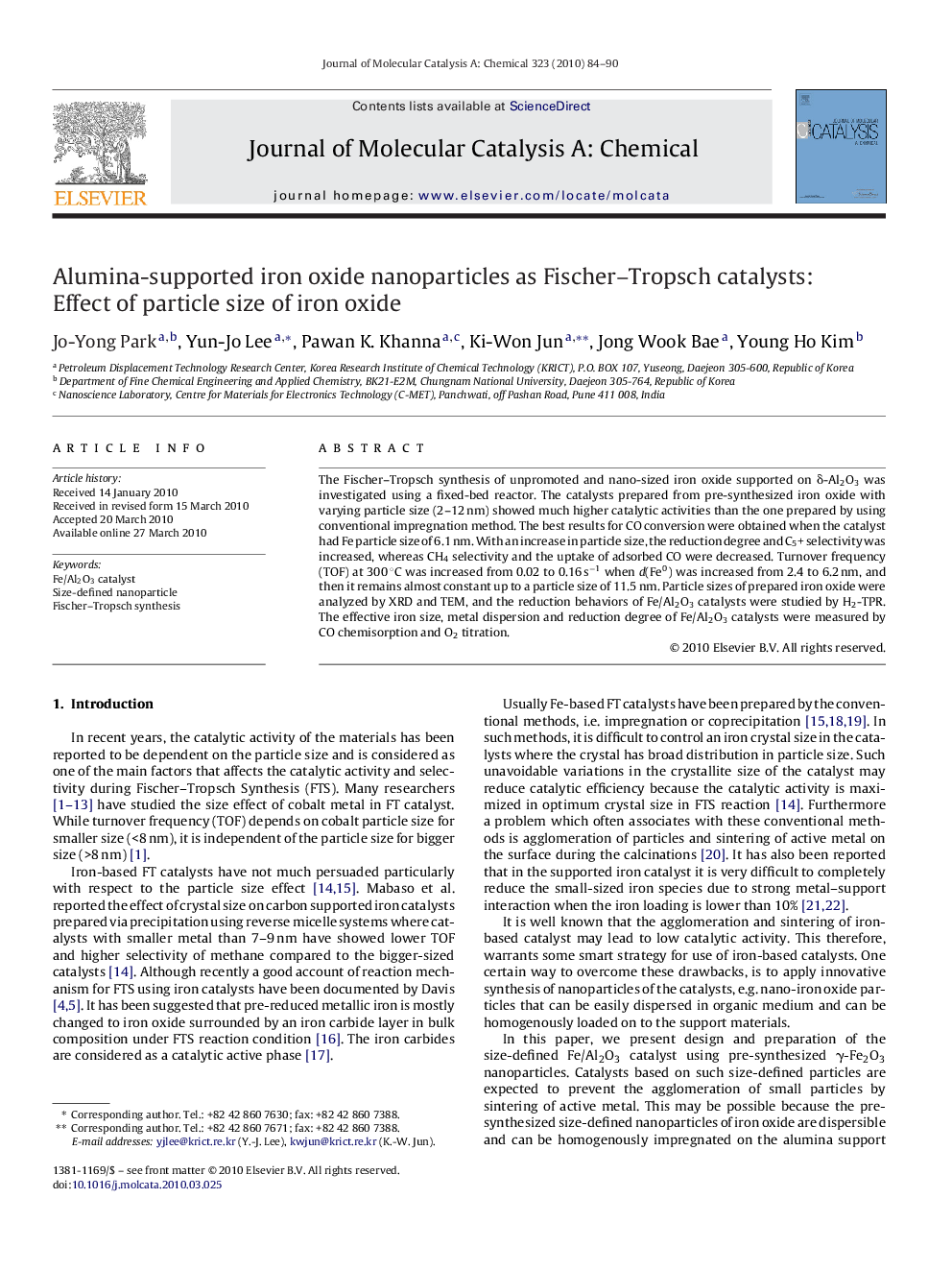| Article ID | Journal | Published Year | Pages | File Type |
|---|---|---|---|---|
| 66810 | Journal of Molecular Catalysis A: Chemical | 2010 | 7 Pages |
The Fischer–Tropsch synthesis of unpromoted and nano-sized iron oxide supported on δ-Al2O3 was investigated using a fixed-bed reactor. The catalysts prepared from pre-synthesized iron oxide with varying particle size (2–12 nm) showed much higher catalytic activities than the one prepared by using conventional impregnation method. The best results for CO conversion were obtained when the catalyst had Fe particle size of 6.1 nm. With an increase in particle size, the reduction degree and C5+ selectivity was increased, whereas CH4 selectivity and the uptake of adsorbed CO were decreased. Turnover frequency (TOF) at 300 °C was increased from 0.02 to 0.16 s−1 when d(Fe0) was increased from 2.4 to 6.2 nm, and then it remains almost constant up to a particle size of 11.5 nm. Particle sizes of prepared iron oxide were analyzed by XRD and TEM, and the reduction behaviors of Fe/Al2O3 catalysts were studied by H2-TPR. The effective iron size, metal dispersion and reduction degree of Fe/Al2O3 catalysts were measured by CO chemisorption and O2 titration.
Graphical abstractHomogeneously sized iron oxide nanocrystals of 2.0–12.0 nm were prepared and supported on alumina to evaluate a crystal size effect on Fischer–Tropsch reaction.Figure optionsDownload full-size imageDownload high-quality image (76 K)Download as PowerPoint slide
